KEYNOTES & PANELS
Keynote Speakers ; Panels
Keynote Speakers
1. “eHEALTH in Europe”
Abstract
While health organizations fight to increasingly integrate their health records and use IT for betterment of patient care, countries try to find mechanisms to bridge the gaps between levels of care as well as different systems and practices. eHealth in Europe is considered to such a high degree as to figure in the first directive of the EU on cross-border care to enter into force in October 2013. There is no timelier occasion to discuss some of most meaningful and important programs at EU level than IEEE HEALTHCOM 2013. This Keynote will update information about a number of projects and initiatives at EU level where Portugal is also participating (PARENT project; eHGI – eHealth Government Initiative; epSOS project; and eSENS). Like all other EU member states, Portugal is part of the high-level eHealth Network, which meets biannually to define the eHealth strategy and priorities regarding Cross-border care. Health at patient level is rapidly growing and a number of issues like cross-border telemedicine services as well as patient portals and patient controlled electronic health record as worthy of discussion.
|
Name and Affiliation
Prof. Henrique Martins, MD(Lisbon), MPhil, PhD(Cambridge)
Assistant Professor, Faculty of Health Sciences, Universidade da Beira Interior, Portugal
Adjunct for Health IT to the Portuguese Heath Secretary of State, Ministry of Health
President and CEO of the SPMS – Shared Services of the Portuguese Ministry of Health
Health Executive education Coordinator at the Catholic Lisbon Business School.
Internist Physician, Fernando Fonseca Hospital, Lisbon, Portugal.
|
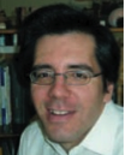 |
Short Bio
Prof. Martins is an Internal Medicine Specialist. He obtained his PhD degree from the Judge Business School, University of Cambridge with a thesis on “The use of Mobile ICT in clinical Settings”. He holds a Master in Management from the University of Cambridge and a Masters in HIV/AIDS from the University of Barcelona. He has several publications in the area of Mobile computing in healthcare and many conference presentations/keynotes in the area of eHealth.
He currently works at the Ministry of Health as Adjunct for Health IT to the Health Secretary of State and is President and CEO of the Shared Services of the Portuguese Ministry of Health (SPMS), being responsible for the new Health Information Sharing Platform for Electronic Health Records and for nationwide efforts on complete electronic prescription and Clinical informatics. He is the representative for Portugal at the European eHealth Network as well as the National EpSOS projecto Coordinator (www.epSOS.eu). He additionally works as CMIO – Chief Medical Information Officer at the Hospital Fernando Fonseca, and coordinates the Center for Investigation and Creativity in Informatics (www.ci2.pt), where he supervises projects in robotics, mobile computing and database exploration and intelligent systems. He teaches health management, leadership and medical informatics in Portugal and abroad. |
2. “Transparent Robot-Assisted Gait Training in Neurorehabilitation”
Abstract
Today, a wide variety of robotic devices supports gait training for patients with neurological locomotor deficits. However, clinical studies have not confirmed the expected therapeutic benefits of these devices compared to conventional therapy. Reasons could be that current robotic environments often limit active patient participation and change the task to be trained, due to kinematic constraints, excessive assistance, or undesired interaction forces caused by robot dynamics. This talk will present hardware and control concepts that remedy these shortcomings and enable transparent, user-centered gait training. These concepts range from task-specific hardware design over the targeted use of compliance to minimalistic balance assistance. Embodiments and experimental results will be shown for all concepts, for example a robotic platform for overground gait training in rats, which enabled groundbreaking research on recovery after spinal cord injury, as well as a recent extension of the robotic principle to human scale.
|
Name and Affiliation
Dr.-Ing. Heike Vallery
TU Delft, Netherlands
|
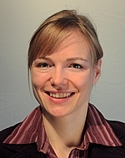 |
|
Short Bio
Heike Vallery graduated in Mechanical Engineering from RWTH Aachen University in 2004, and she received her PhD from Technische Universität München in 2009. As a postdoc at ETH Zürich, she established a research group on leg exoprosthetics. In 2011, she joined Khalifa University in Abu Dhabi as an assistant professor. Currently, she holds an assistant professorship at Delft University of Technology, and she also remains affiliated with ETH Zürich and Khalifa University. Her research interests are in the areas of bipedal locomotion, rehabilitation robotics, and haptic human-robot interaction. She has published more than 30 peer-reviewed publications and filed 4 patents.
|
3. “The Challenge of Big Data in Health: Meaningful Use of Information for Patient Centered Care”
Abstract
The advancement of technology has allowed the establishment of different forms of data acquisition and today we have an explosion of data. Now, the problem is not to get the data, but transform it into information and knowledge that is particularly useful in decision making. In healthcare is no different, health professionals rely on data and information to make important decisions regarding their patients In the past, it was difficult to obtain reliable information, accurate and in real time, so it was common to make a diagnosis based on intuition than knowledge of facts. Today, with the advancement of technology, especially in healthcare, is possible to achieve a large amount of data of all kinds. So the problem is not how to get more information but learn to use it wisely. It is necessary to store the data and extract from them information and knowledge in order to care the patients and improve their quality of life. On the other hand, as the data are personal it is possible to understand the evolution of the disease in the individual and thus, to establish a personalized care by practicing patient-centered care. So, we can make prevention and health promotion at the individual level, making them aware of their health and improving their quality of life.
|
Name and Affiliation
Márcia Ito, M. D., DSc.
Research Staff Member
IBM Research Brazil
|
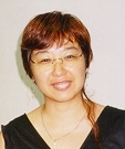 |
|
Short Bio
Marcia Ito is medical doctor, data processing technologist, doctor and master in electrical engineering. Currently, she is a researcher in the Human Systems group at IBM Research Brazil and professor in Faculty of Technology of São Paulo. She is also an Executive Secretary of the Brazilian Health Informatics Society, vice-coordinator of the Committee of Applied Computing in Health at Brazilian Computer Society and she takes part in the ABNT Special Temporary Health Informatics Committee (ABNT/CEET 00:001.78) as an expert in data structure standards in Health Informatics. She has experience in the area of Computer Science and Medical Informatics, with emphasis on Software Engineering, Distributed Artificial Intelligence, Accessibility and e-Health, acting on the following topics: Requirements Engineering, Health Service Design, Multi-agent Systems, Management of Chronic Patients and Education for People with Special Needs.
|
4. “Disaster Communications after the Accidents of the Fukushima Nuclear Power Plant (Japan)”
Abstract
The author served as vice-Rapporteur for ITU-D SG2 Question 14 (Telemedicine and eHealth) and is also involved in the field of disaster communications and emergency medical care as guest research scientist at the Fukushima Nuclear Accident Independent Investigation Commission established by the National Diet of Japan and reviewer of the Commission’s report.
Between the Government of Japan and local governments, there are three independent nationwide urgent communication systems. 1) J-ALERT(caution system for the missile launch, terrorism, natural disaster), 2) LASCAOM (Local government V-SAT network on Ku-band). 3) Municipal Disaster Management Radio Communication Network (via domestic Satellite and VHF radio ). Separately from the network of three above, 4) two-way video conferencing system via Inmarsat satellite is applied between the Ministry of Economy, Trade and Industry, electric power companies, and each local government where nuclear power plant located.
In the accidents of the Fukushima Nuclear Power Plant, the Government gave an evacuation directive for the head of the local governments just after a hydrogen explosion, however the communications didn’t reach to the local governments well. Though there is the disaster communications network nominated for four(1)-(4) as above, the evacuation order and the evacuation advisory issued by the Government didn’t reach the head of the local government. Why? The head of the local government appealed to inhabitants for criticism to hear the evacuation directive from VHF police radio. As a result of having introduced a principle of the free competition into communications industry, for the past 20 years, in the Government of every country, the wireless network that many companies applied by self-management was replaced by cell-phone system. However, it is helped by this disaster by the VHF police radio which was the only network (independent wireless network in Fukushima after the Great East Japan earthquake).
I have investigated the details in the field of disaster communications after the Fukushima Nuclear Power Plant accidents and report it at the Healthcom 2013 Lisbon.
|
Name and Affiliation
Isao Nakajima, M.D., Ph.D., Ph.D.
Tokai University
Fukushima Nuclear Accident Independent Investigation Commission of the National Diet
|
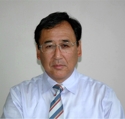 |
|
Short Bio
He is a Professor of the Department of Emergency Medicine and Critical Care, Tokai University School of Medicine and has his own laboratory for medical communications. He had finished his chief resident course at the 2nd General Surgery of Tokai University Hospital. He received his M.D. degree from Tokai University, Ph.D.(Bio Medical Eng.) in 1988, and Ph.D.(Applied Informatics) in 2009 from University of Hyogo Graduate School. He has studied on telemedicine and eHealth for over 30 years, had conducted the Asia Pacific Medical Network using ETS-V satellite under the umbrella of PARTARS project of the Government of Japan. Recently, he has developed the ICT system to prevent Avian Influenza. He has been a consultant of WHO-WPRO, World Bank, and JAXA, also a Vice-Rapporteur of ITU-D for ehealth.
|
Panels
1. “Telemedicine Today!”
Abstract
There is a vision being explored by an unprecedented partnership of industrial research organizations, academia, and government research organizations. This vision incorporates networked home applications, new intelligent transportation applications, and e-health care appliances and communications services in the home aimed at reducing the soaring costs of medical care for a burgeoning ageing population. These three “big bangs” will likely change the way people work, interact with family members, socialize, and derive health care services over the next seven to ten years. This shared vision is driven by an increasingly large population of sophisticated Internet citizens who seek to leverage enhanced, multimodal communication environments to juggle home, work and personal needs, to have high quality and dependable home health care. This talk will explore the promise of emerging eHealth technologies, applications, and services within the landscape of market forces driving eHealth service providers and end-users operating within the boundaries of an uncertain regulatory arena.
|
Moderator Name and Affiliation
Eric Addeo, DeVry University, North Brunswick, NJ, USA
|
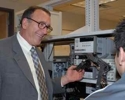 |
Short Bio
Dr. Addeo has more than 20 years of experience at the senior management level in the industrial research sector where he has managed the day-to-day technical and strategic directions of world-class applied research organizations at AT&T Bell Labs, Telcordia, and most recently at Panasonic Labs in Princeton. He is the recipient of NJITs Distinguished Alumni Medal for his management and leadership of industrial research organizations. He holds ten patents and has given numerous talks at national and international IEEE conferences and research workshops on emerging wireless technologies and novel information-networked applications. He is the recipient of the New Jersey Inventors Hall of Fame Award in recognition of his seminal contributions to research and for the development of current-generation cellular communications systems. Dr. Addeo’s novel contributions to the field of communications have been on display at the Smithsonian Institute in Washington, DC. He has also appeared on CNN’s Technology watch. He earned a Bachelor and Master of Science degrees in Electrical Engineering from New Jersey Institute of Technology. He has an earned Ph.D. in Electrical Engineering from Stevens Institute of Technology. He is currently a Professor in the college of Engineering and Information Sciences at DeVry University.
Panelists
|
Portugal - Miguel Castelo Branco (University of Beira Interior, Portugal; Centro Hospitalar Cova da Beira – University Hospital, Covilhã, Portugal)
Brazil – Cláudio de Souza (State University of Minas Gerais, Belo Horizonte, Brazil)
Spain - José Luís García Pacheco (Carlos III Institute, Madrid, Spain)
USA - Eric Addeo (DeVry University, NJ, USA)
Ecuador - Milton Jijón (Atalaac, Ecuador)
China - TBI |
2. “Cloud or not to Cloud for eHealth”
Abstract
True to human physiology and anatomy the healthcare provider entities or HPE (healthcare IT applications, networks, providers, physicians, departments, such as diagnostics, cardiology, radiology, pharmacy departments to name a few) are disparate and can be widely and geographically distributed. But all these disparate HPEs serve a single other entity, which is the patient. The disparateness of the HPE causes many issues in providing consistent care to a patient. One major issue is difficulty in providing consistent and single electronic medical record (EMR). With the advent of use of personal mobile or IoT (Internet of Things) devices, including small diagnostics devices such as those supporting Continua consortium architecture or ISO/IEEE 11073 series standards, the upkeep of EMR becomes even more challenging. Can Cloud come to the rescue? What are the issues that should be addressed to support true Cloud based secure EMR and healthcare services in general? This panel of industry and academia experts will address these issues.
|
Moderator Name and Affiliation
Masum Z Hasan, Technology Director, Cisco
|
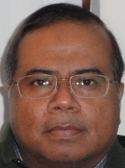 |
Short Bio
Dr. Masum Z. Hasan is currently a Technology Director at the Cloud CTO office of Cisco Systems, San Jose, USA. He currently leads R&D work in Cloud networking, Network Virtualization and Programmable Networking (aka SDN: Software-defined Networking). His work focus also has been in the area of Grid/High-performance Computing, Healthcare Computing and Networking, Network Analytics, Traffic Engineering, Application and Network resource access control, and Network Management. Masum’s prior job experiences include Principal Investigator at the Bell Labs, USA, Research Scientist at the University of Toronto, Canada and software engineer / computer scientist positions in a number of companies / institutions in Canada and Bangladesh. Masum obtained his MMath and PhD in Computer Science from University of Waterloo, Canada and combined BEng-MEng in Computer Engineering from Odessa National Polytechnic University in Ukraine. Masum has been serving on the organizing and technical program committees of a number of IEEE/IFIP International Conferences and co-editor of a number of journals and magazines. He also serves as the Chair for the IEEE Communications Society's Ad hoc Committee on Cloud Communications and Networking Committee.
Panelists
|
Nazim AGOULMINE, Professor, University of Evry, France
Nazim AGOULMINE is an IEEE Distinguished Lecturer and Senior member. He is a full professor at the University of Evry, France since 2011 leading a research team on networking and multimedia systems (COSMO group, IBISC Lab). He received his Engineer degree in 1988 from USTHB, Algeria and his Master and Phd degrees in computer science respectively in 1989 and 1992 from the University of Paris XI, France. Since 1989, he has been involved in several projects on broadband wireless and fixed network management funded by the European commission (Advance, Pemmon, Forms, ICM, Adanets, Seimonet, Sumo, Wellcom, Expeshare, Easi-Clouds) and the French government (Cesame, Amarrage). His research interests are mainly wired and wireless networks, cloud computing, autonomic management, wireless sensor networks, eHealth, etc. He is member of several technical programme committees of IEEE international conferences, MMNS, IM, NOMS App, LANOMS, ASNOMS, MWCN, LAACS, etc. and the co-author of three books in network architectures and management. He has served several times as co-chairman of international conferences and workshops (IEEE/IFIP MMNS conference, IEEE BcN Workshop, HPOV workshop, IEEE GIIS).
|
 |
Gerard Parr, Professor, University of Ulster, UK
Gerard Parr holds the Full Chair in Telecom- munications Engineering and is a Member of the Computer Science Research Institut in the Faculty of Computing & Engineering at the University of Ulster in Coleraine, Northern Ireland. He holds a PhD in Self Stabilizing Protocols, aspects of which were completed with Professor Jon Postel as a Visiting Research Scientist at the USC Information Sciences Institute in Marina Del Rey, Los Ange- les on US-DARPA funded research projects into Fault-Tolerant and Self-stabilizing Protocols. Areas of interest include self-stabilizing protocols, interplanetary network proto- cols, real-time network management systems, real-time data analytics for NMS, UAV-Bridging and UAV Safety Management Protocols, Energy Aware Infrastructure, Resource Management Protocols, Applications Performance Management in Virtualised Environments, Wireless Sensor Clouds, Disaster Response Communications and Cloud Computing. He is a Member of the Technical Committees of the numerous IEEE International Conferences including MILCOM, , CCNC and WCNC and Globecom WiUAV . In recent years he has been successful in attracting major EPSRC research funding for a project in Sensing Unmanned Autonomous Aerial Vehicles (SUAAVE) that involves University College London, University of Oxford, UK Home Office, Thales, BAE Systems and Boeing USA. Parr was recently invited to become a Member of the UK Government Engineering and Physical Sciences Research Council ICT Strategic Advisory Team. He has been appointed as an International Scientific Advisor to ETISALAT-BT Innovation Centre in UAE. He is currently acting as Senior Guest Editor for IEEE JSAC for a Special Issue on Communications Dynamics in UAVs. More recently, he is currently advising NSF on Joint research programmes with the Government of India on Pervasive Sensors.
|
 |
Dr. Benjamin Hirsch, EBTIC/ Khalifa University
Benjamin Hirsch received a Master of Science in Artificial Intelligence from University of Amsterdam in 2001 and a PhD in Computer Science from University of Liverpool in 2005. From 2005 until 2011 he lead the Competence Center Agent Core Technologies at the distributed artificial intelligence lab DAI Labor of the Berlin Institute of Technology, where he did research on the integration of multi-agents, service oriented architectures and business process management. Additionally he lectured on topics ranging from agents and logics to service engineering. In 2009 he received a OCEB certification as Business Process Management Expert (technical advanced). In 2011, Dr. Hirsch joined the Etisalat British Telecom Innovation Center (EBTIC), where he leads the iCare initiative. Core to the various projects is the concept of computational health, and the application of data analysis to issues of ICT in healthcare. Additionally he is leading the iLearning domain within iCampus where he works within the iCampus initiative looking at the application of intelligent systems to drive and enhance learning.
|
 |
|
|









